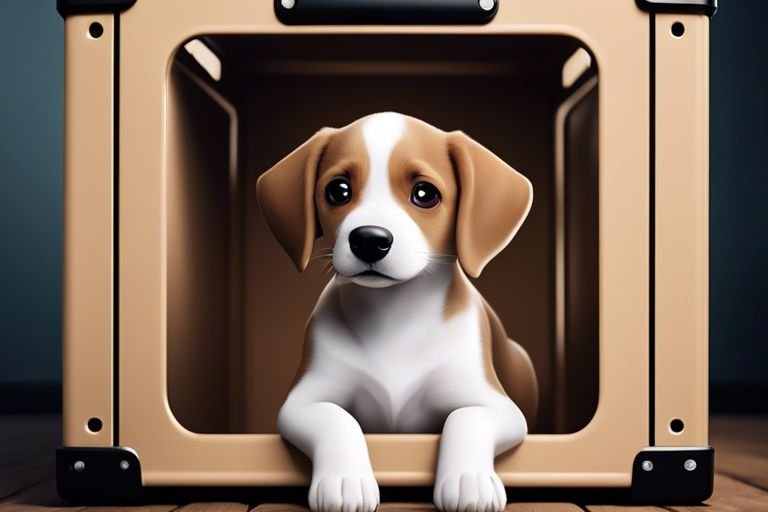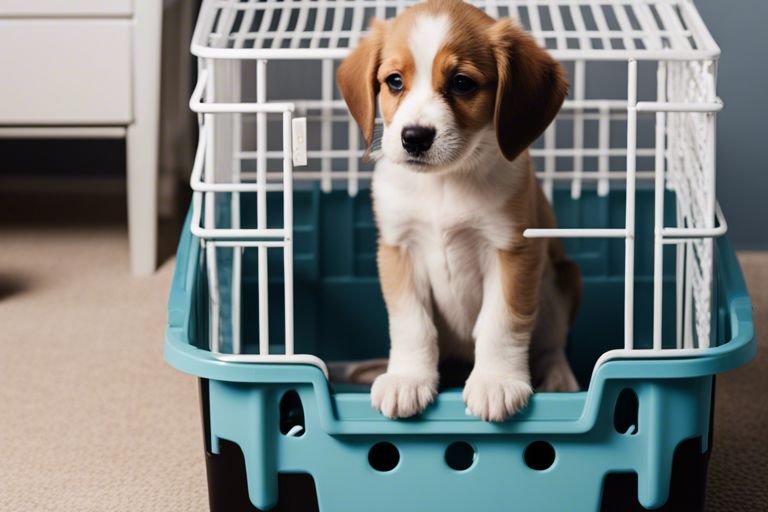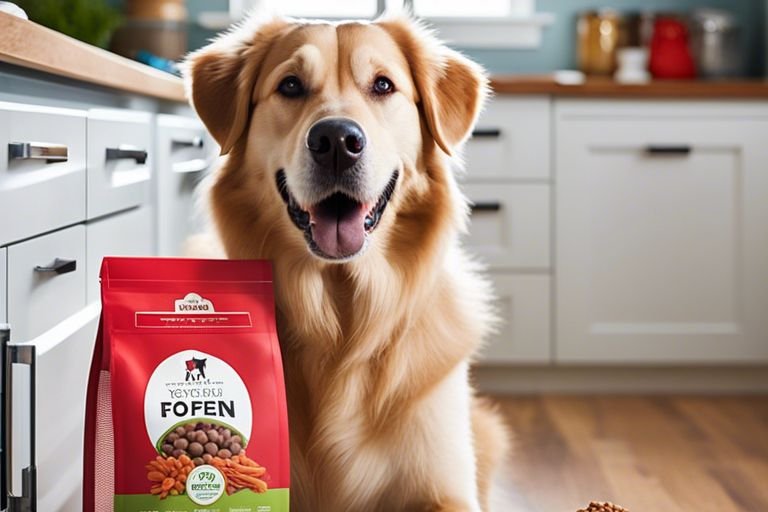Puppy Crate Potty Training: 10 Mistakes to Avoid

Many beginner pet owners probe the world of puppy crate potty training with the best intentions but end up making crucial mistakes that hinder progress. Understanding these common pitfalls can save both you and your furry friend unnecessary frustration and set you on the path to successful crate training. Let’s explore the top 10 mistakes to avoid when initiateing on this important aspect of puppy care.

Key Takeaways:
- Start with proper crate training: Crate training is crucial for successful potty training. Ensure your puppy sees the crate as a safe space rather than punishment.
- Do not use the crate for punishment: Associating the crate with punishment will hinder potty training progress and create negative associations with the crate.
- Do not leave your puppy in the crate for too long: Puppies have small bladders and cannot hold their urine for extended periods. Follow a schedule for potty breaks.
- Be consistent with the crate training routine: Consistency is key when it comes to potty training. Stick to a schedule for feeding, playtime, and potty breaks.
- Avoid scolding your puppy for accidents: Accidents will happen during the potty training process. Instead of scolding, focus on positive reinforcement for good behavior.
Ignoring Puppy Schedule
Irregular feeding times
Your puppy’s ‘Feeding’ shortened to ‘feeding’.schedule plays a crucial role in their potty training routine. Irregular feeding times can lead to unpredictable bathroom breaks and accidents in the crate. Make sure to establish a consistent feeding schedule for your puppy to regulate their bathroom habits.
Inconsistent potty breaks
For successful crate potty training, it’s imperative to take your puppy out for potty breaks consistently. Ignoring scheduled potty breaks can confuse your puppy and lead to accidents inside the crate. Set a routine for potty breaks, including right after meals, after waking up, and before bedtime.
Consistency is key when it comes to feeding your puppy and taking them out for bathroom breaks. By sticking to a regular schedule, you can help your puppy develop good habits and prevent accidents in their crate. Recall, patience and consistency are the pillars of successful puppy crate potty training.

Choosing Wrong Crate Size
While crate training is a valuable tool for potty training your puppy, choosing the wrong crate size can lead to various challenges. To avoid this mistake and many others, check out the comprehensive guide on 11 Common Crate Training Mistakes and How to Avoid Them.
Too large crate
With a crate that is too large, your puppy may designate one area for sleeping and another for potty, defeating the purpose of crate training. This may lead to accidents inside the crate and hinder the potty training process.
Too small crate
Size matters when it comes to crate training. A crate that is too small can cause your puppy discomfort and stress, making them reluctant to spend time in the crate. This can lead to anxiety and behavioral issues in the long run.
Wrong crate size selection can impact the effectiveness of crate training and your puppy’s overall comfort. It is imperative to choose a crate that allows your puppy to stand up, turn around, and lie down comfortably, without providing excess room for separate potty areas.

Skipping Crate Training
Keep in mind that crate training is a crucial step in successfully potty training your puppy. A crate serves as a den for your puppy, a safe space where they can rest and feel secure. Not only does crate training help with potty training, but it can also prevent destructive behaviors and keep your puppy safe when you can’t supervise them.
By skipping crate training, you are missing out on a valuable tool that can aid in the potty training process. Without the structure and routine that a crate provides, your puppy may struggle to learn where they should go potty and may have more accidents around the house.
It’s important to introduce your puppy to the crate gradually and make it a positive experience for them. Start with short periods in the crate while you are home, gradually increasing the time as your puppy becomes more comfortable. Use treats and praise to create a positive association with the crate.
Note, consistency is key in potty training, and the crate can help you establish a routine for your puppy. Skipping this important step may only prolong the potty training process and lead to frustration for both you and your furry companion.
FAQ
Q: What is puppy crate potty training?
A: Puppy crate potty training is a method used to house train puppies by utilizing a crate or a kennel to confine them when they are not supervised, thus encouraging them to control their bladder and bowel movements.
Q: Why is puppy crate potty training important?
A: Puppy crate potty training is important because it helps establish a routine for your puppy, teaches them bladder control, and prevents accidents inside the house, leading to a well-behaved and disciplined pet.
Q: How long should a puppy stay in the crate during potty training?
A: A general rule of thumb is that a puppy can stay in the crate for as many hours as their age in months, plus one. For example, a 2-month-old puppy can be crated for a maximum of 3 hours at a time.
Q: What are the top 10 mistakes to avoid in puppy crate potty training?
A: The top 10 mistakes to avoid in puppy crate potty training include inconsistent schedule, using the crate as punishment, not rewarding good behavior, ignoring signals, using the wrong size crate, leaving the puppy in the crate for too long, not cleaning accidents properly, not supervising the puppy outside the crate, giving up too soon, and not being patient.
Q: How can I make puppy crate potty training successful?
A: To make puppy crate potty training successful, establish a consistent schedule, use the crate as a positive space, reward good behavior, supervise the puppy closely, clean accidents thoroughly, be patient and persistent, and seek professional help if needed.




